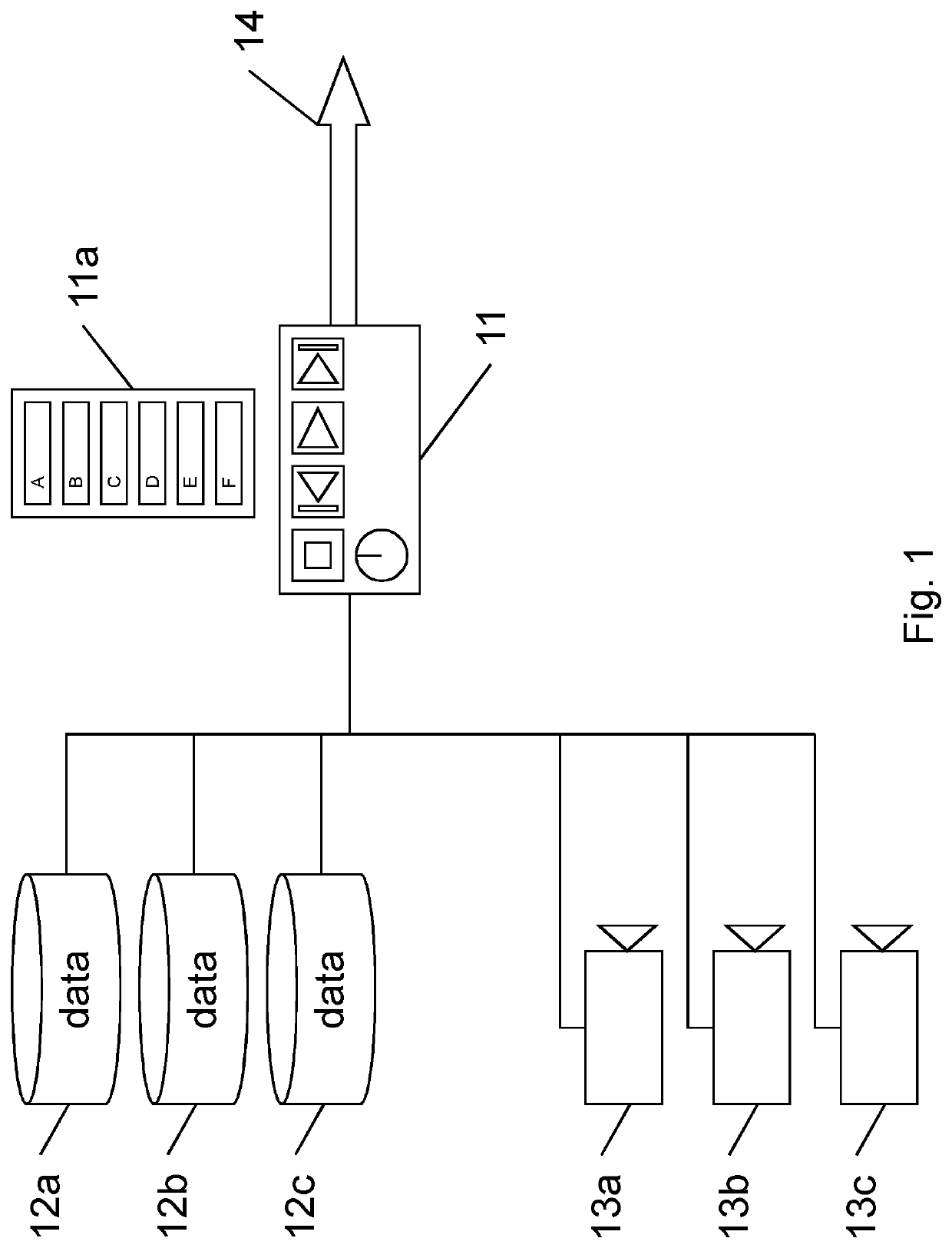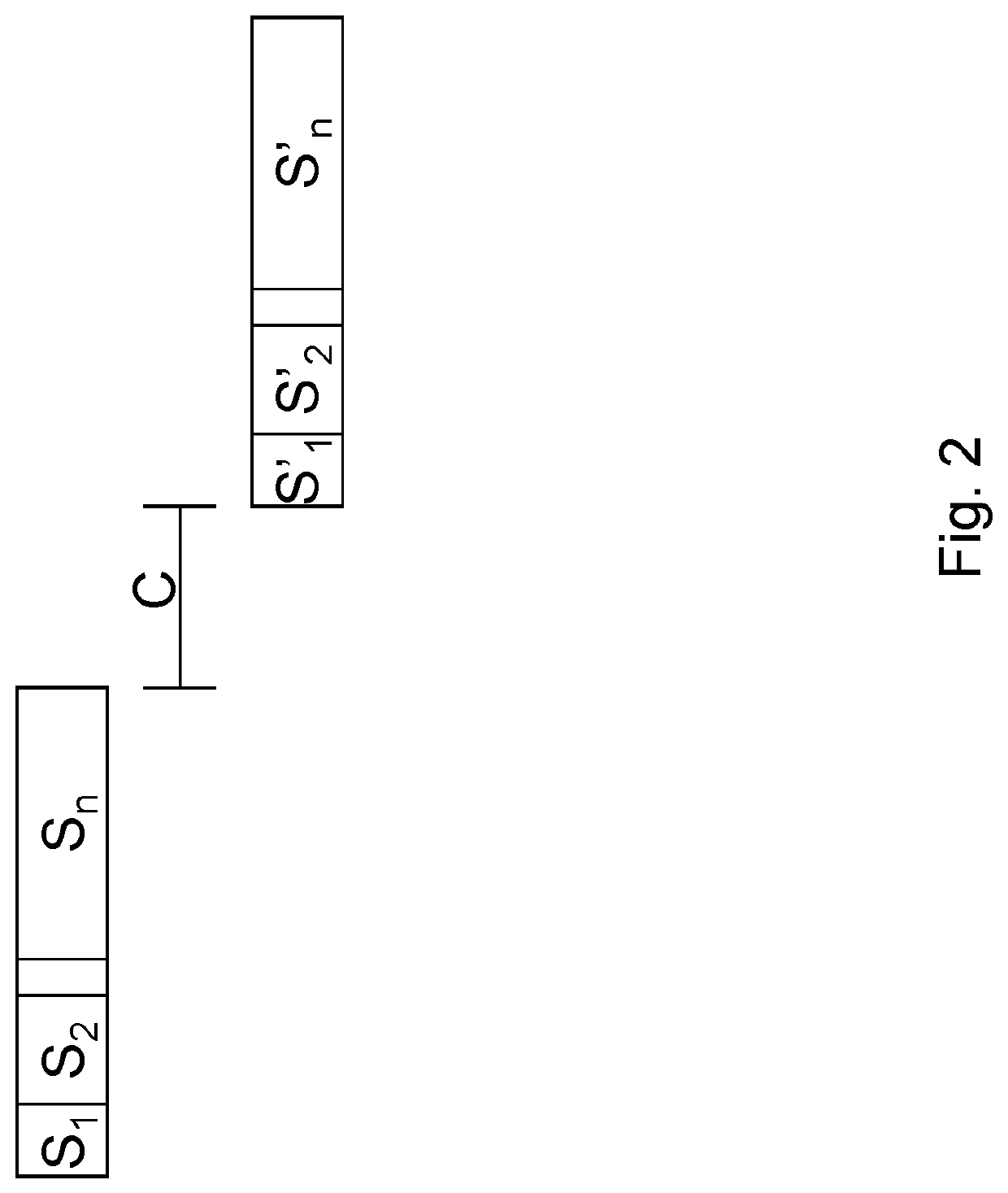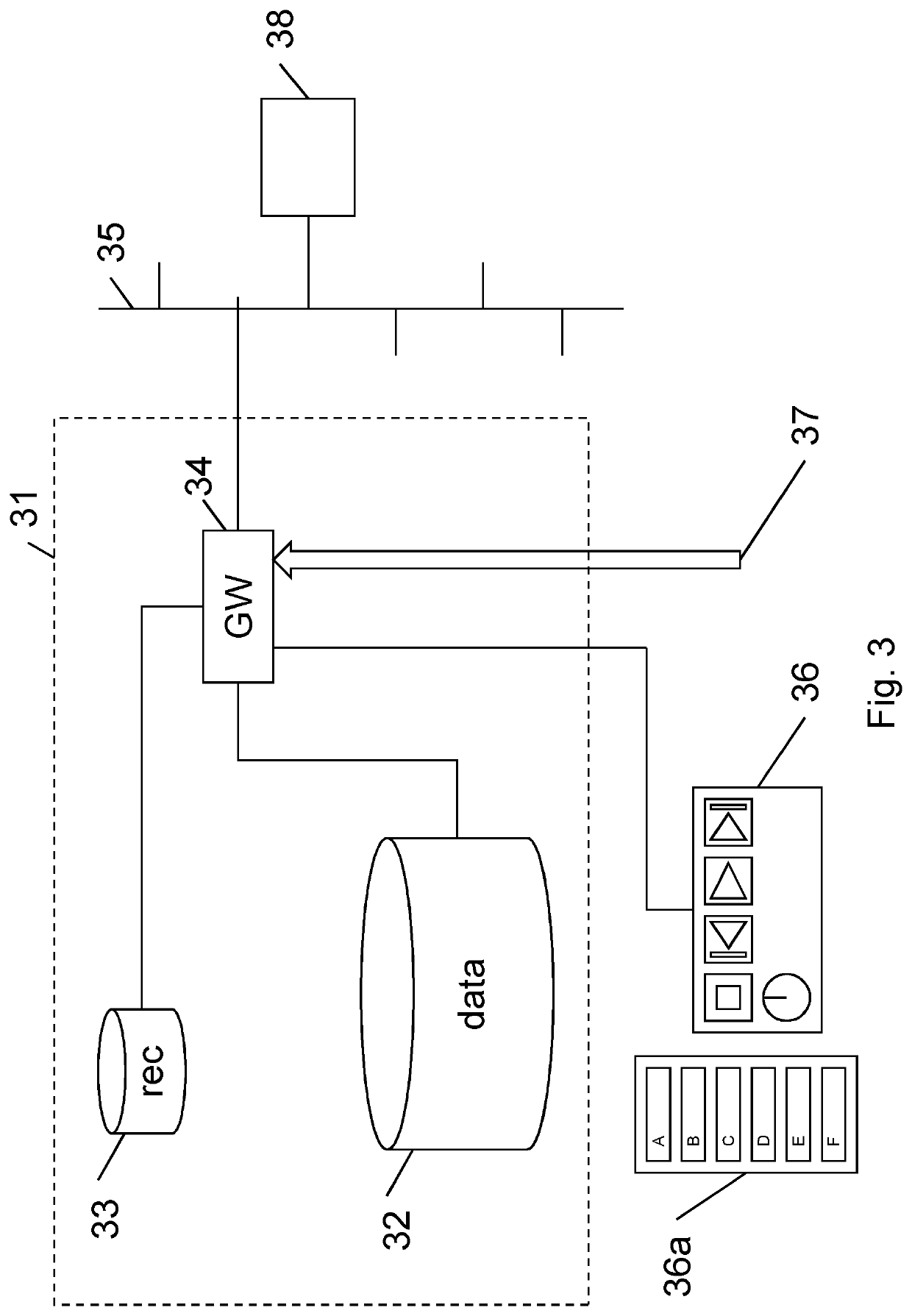Methods and systems for providing file data for a media file
a technology for media files and file data, applied in the direction of selective content distribution, electronic editing digitised analogue information signals, instruments, etc., can solve the problems of large time overhead, inability to obtain unconverted files ahead of time, and effectively reduced to zero, so as to prevent excessive delays in responding to requests, the effect of avoiding excessive delays
- Summary
- Abstract
- Description
- Claims
- Application Information
AI Technical Summary
Benefits of technology
Problems solved by technology
Method used
Image
Examples
Embodiment Construction
[0067]A first embodiment of the invention is now described with reference to FIG. 3. A file system 31 comprises a data store 32, a file record database 33, and a gateway 34. The gateway 34 is arranged to receive streamed essence data 37 (data constituting video and / or audio information). The file system 31 generates and allows to be read a media file for a programme such as a news programme, as described below. The gateway 34 is in communication with a user interface device 36 for controlling the running order 36a of the programme, in other words for determining the content of the programme while the programme is being broadcast.
[0068]The file system 31 is in communication via the gateway 34 with a network 35. A device 38 running a “qualified” software application, as described in detail later below, is in communication with the file system 31 via the network 35.
[0069]FIG. 4 is a flow chart showing the operation of the file system 31 when beginning creation of the media file for the...
PUM
| Property | Measurement | Unit |
|---|---|---|
| time | aaaaa | aaaaa |
| length | aaaaa | aaaaa |
| segment length | aaaaa | aaaaa |
Abstract
Description
Claims
Application Information
 Login to View More
Login to View More - R&D
- Intellectual Property
- Life Sciences
- Materials
- Tech Scout
- Unparalleled Data Quality
- Higher Quality Content
- 60% Fewer Hallucinations
Browse by: Latest US Patents, China's latest patents, Technical Efficacy Thesaurus, Application Domain, Technology Topic, Popular Technical Reports.
© 2025 PatSnap. All rights reserved.Legal|Privacy policy|Modern Slavery Act Transparency Statement|Sitemap|About US| Contact US: help@patsnap.com



